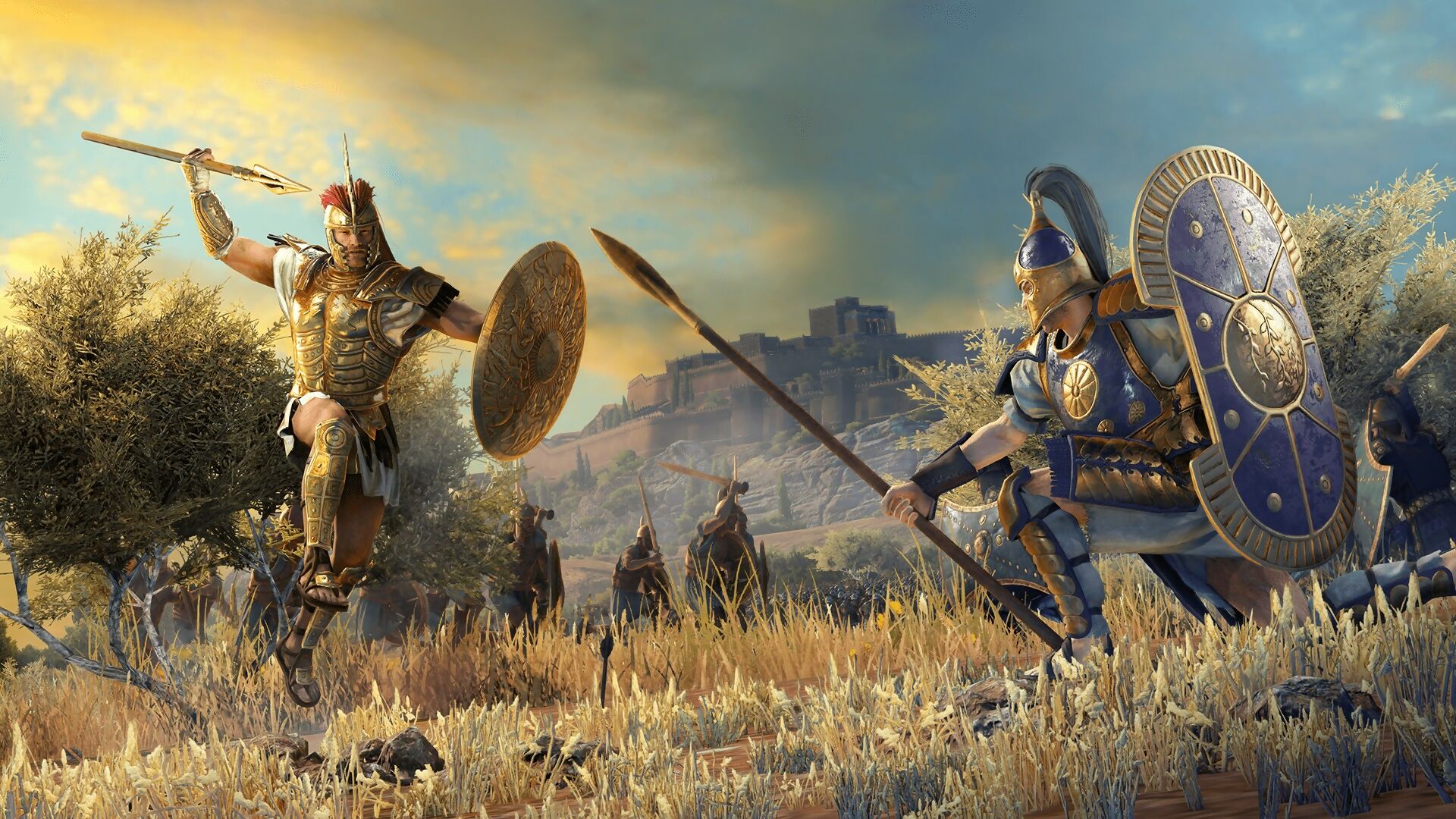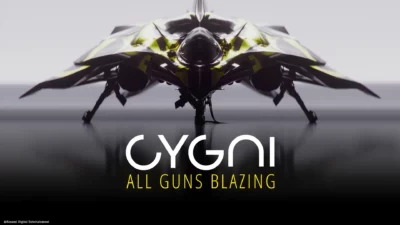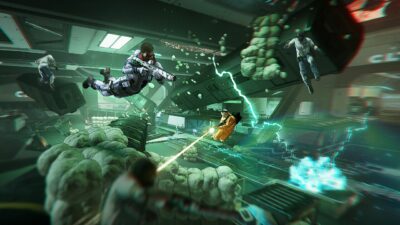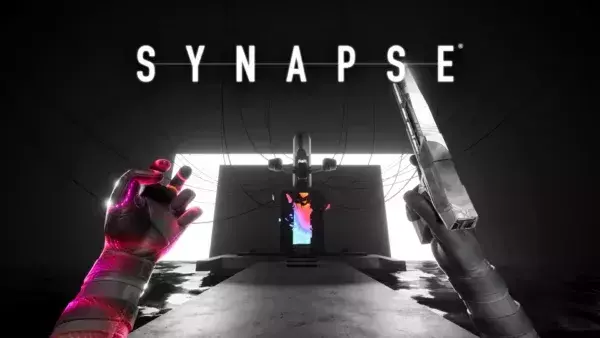
The Trojan War hasn’t been touched by historical strategy series Total War. Guess what’s changing with Total War Saga: Troy? Yep, we step back to the bronze age in the middle of the Mediterranean to see what life (and death) might have been like all those many years ago, before plonking you right in the middle of some massive battles and hoping you were listening at RTS school.
While most of Creative Assembly’s series has been a stickler for (relative) historical accuracy, the setting and story of Troy – in no small part because of the few historical records from the era – takes its inspiration instead from Homer’s Iliad, as well as the myths and tales of the era that have survived the centuries.
It’s not as fantastical as the Total War: Warhammer tie-ins have been, of course, but those looking for pure historical fact may want to keep on walking. The rest of us? Well, we’ll likely have fun, won’t we?
To figure out where Troy sits in the Total War pantheon, we spoke with Maya Georgieva, game director on the project. “We actually do have enough sources regarding armour, weapons, and architecture,” Georgieva says of historical accuracy.
“This gives us the foundation of what life would have been like, so we can offer players a high level of authenticity when they load into a campaign and first lay eyes on Aegean civilisation.” Acknowledging The Iliad doesn’t offer a true historical document from which to take reference points, she does add that using Homer’s odyssey “does add the depth and colour that we need to bring the backdrop to life.”
 5_.png” alt=”” width=”1920″ height=”1080″ />
5_.png” alt=”” width=”1920″ height=”1080″ />The Minotaur’s really just a power-hungry chap in a mask, but he packs a wallop.
One thing Total War Saga: Troy does feature – historical accuracy fans may want to sit down – is mythical creatures. Incorporated to offset the inherent disadvantage of the Bronze Age and its lack of unit variety, according to Georgieva, these beasties have been introduced as a way to spice things up a bit.
But it’s not like you’re just going to see a Minotaur plopped into the middle of a fight – there are efforts made to make these creatures… well, let’s say ‘realistic’, at least to a certain degree; so they’re useful in the game, but also don’t significantly alter its tone.
“Of course, as with all of the content in Troy, they are also subject to the ‘truth behind the myth’ approach,” adds Georgieva. “So we’ve had a lot of fun researching ways to implement them within this concept. Some lent themselves better than others, and the Minotaur is a good example of this.
In Greek mythology, the Minotaur was a monstrous, man-eating beast on the island of Crete. This iconic monster was first created when Poseidon presented King Minos with a sacrificial bull which he refused to slaughter, forcing the Greek god to repay this act of sacrilege by cursing the king’s wife to bear a child that was half-bull, half-man.” Mythology is incredible.
“According to the myth, Athenian youths were sent as tribute to Minos, to be eaten by the monster in its lair – a maze called the Labyrinth, built by Daedalus to house the Minotaur. Ultimately, the monster was slain by Theseus – roughly one generation prior to the Trojan War in the timeline of Greek mythology.”
So how do you make that even remotely ‘real’? Well, the team has it covered: “Scientists speculate that the basis for the Labyrinth may be the complex architecture of the Minoan palace in Knossos,” Georgieva explains.
“The name ‘labyrinth’ may be related to the sacred double-bitted axe of the Minoans, called ‘labrys’. In Troy, we’ve created a backstory for our Minotaur that reconciles the timelines and the fact that Homeric Crete is dominated by the Mycenaeans and not the Minoans for at least two centuries since the fall of the latter.
 2_.png” alt=”” width=”1920″ height=”1080″ />
2_.png” alt=”” width=”1920″ height=”1080″ />As ever, Troy offers some great battlefield views.
“We think of our Minotaur as a rebel or bandit-king who invokes the symbols of the past to stake a claim for power – he uses the bull mask and the double-axe as means to connect to the Minoan heritage and incite followers.” And that, friends, is how a mythical creature becomes a more realistic, heavy-hitting special unit in a real-time strategy game.
The core game is, of course, similar to what has played out before – it’s a winning formula, there’s not going to be a huge amount of work done under the bonnet. There do have to be tweaks though, to factor in – for example – that combat is much more infantry/melee-focused than in previous Total War titles, without even cavalry featuring in Troy.
“That is why we have focused on improving what we already have, like the infantry battles,” Georgieva says, “making the difference between light, medium, and heavy troops really stand out, while also trying to increase the focus on tactical troop movement around the battlefield by increasing the impact of flanking or exhaustion, as well as introducing new terrain types.
“All this has also impacted our battle maps, making them more vibrant and tactical, allowing experienced commanders to have more options for outmanoeuvring and outsmarting their enemies.”
On the other hand, the winning formula being tweaked into a ‘cut back’ version of the core Total War through the Saga spin-offs has seen some of the series’ dedicated fan base voice their displeasure. Georgieva, though, doesn’t see the sub-series as a distraction from the core – more a complementing factor that improves the series as a whole:
“I don’t see the Sagas as a factor for division in the series,” she says, “but rather as a welcome extension and also a vehicle for exploration – more Total War for the fans who can’t get enough, and new eras, new ideas, and new mechanics to try and play with.”
Genre: Strategy
Format: PC
Developer: Creative Assembly
Publisher: Sega
Release: 2020





